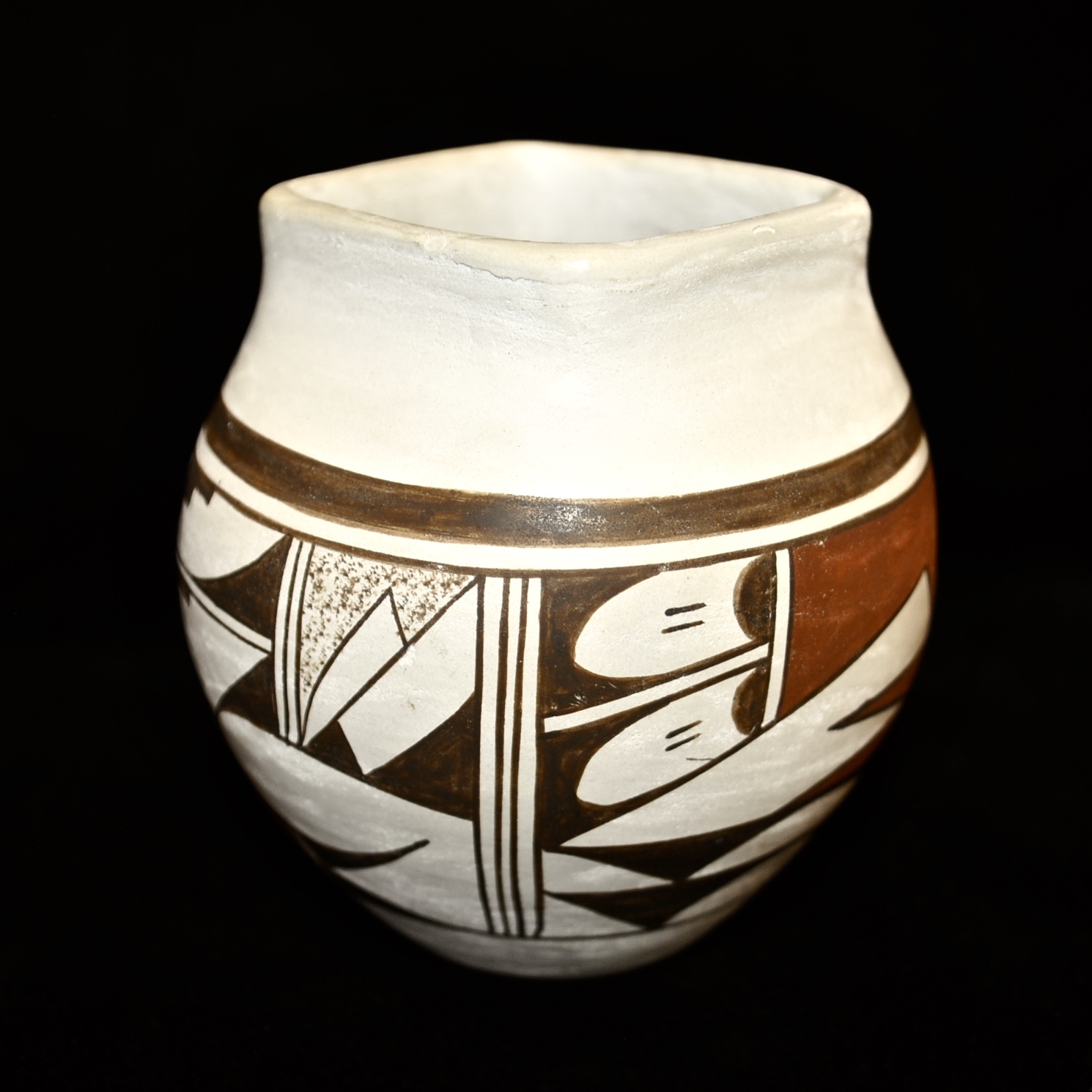- Pottery
- Traditional Hopi Pot by Elva Nampeyo
Traditional Hopi Pot by Elva Nampeyo
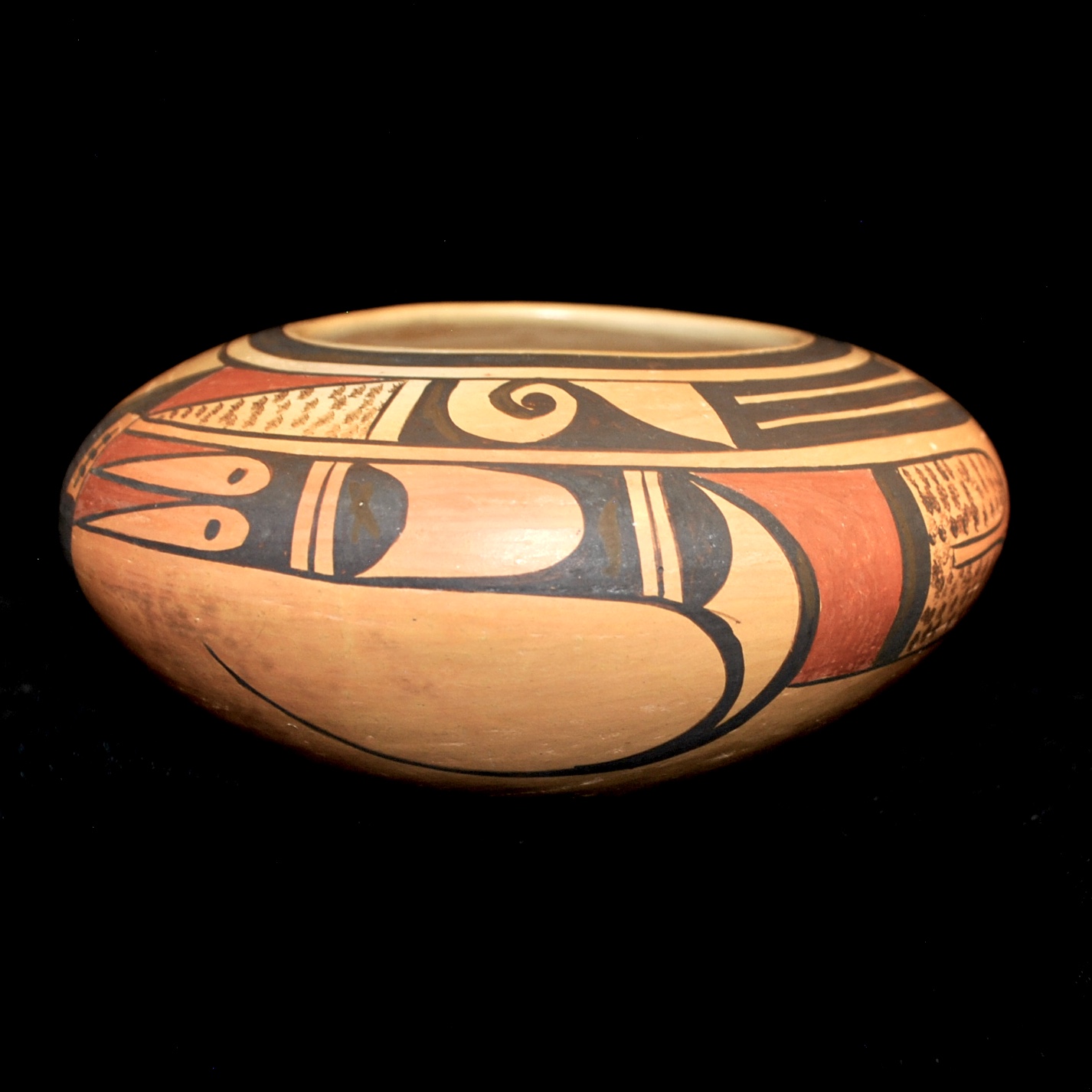
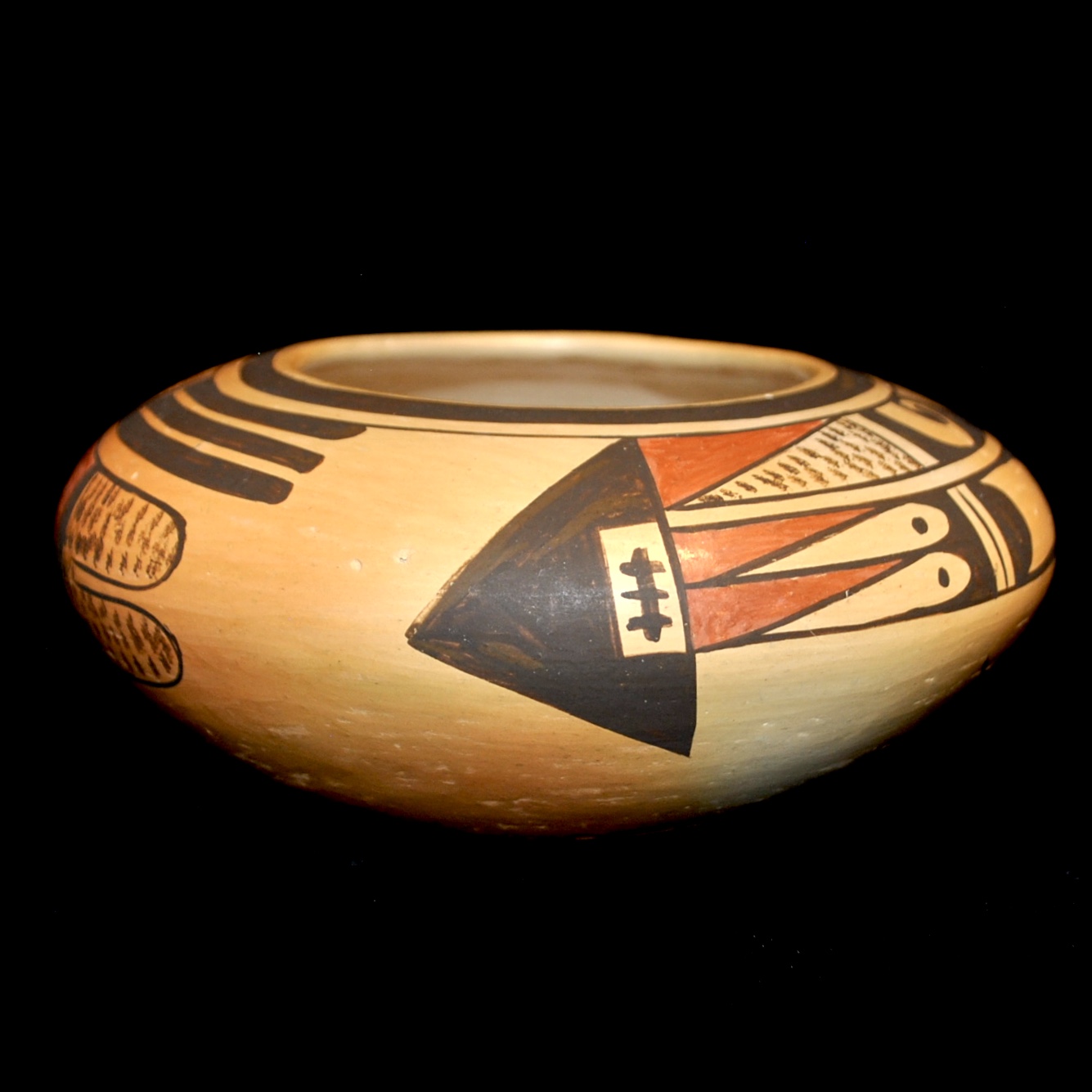
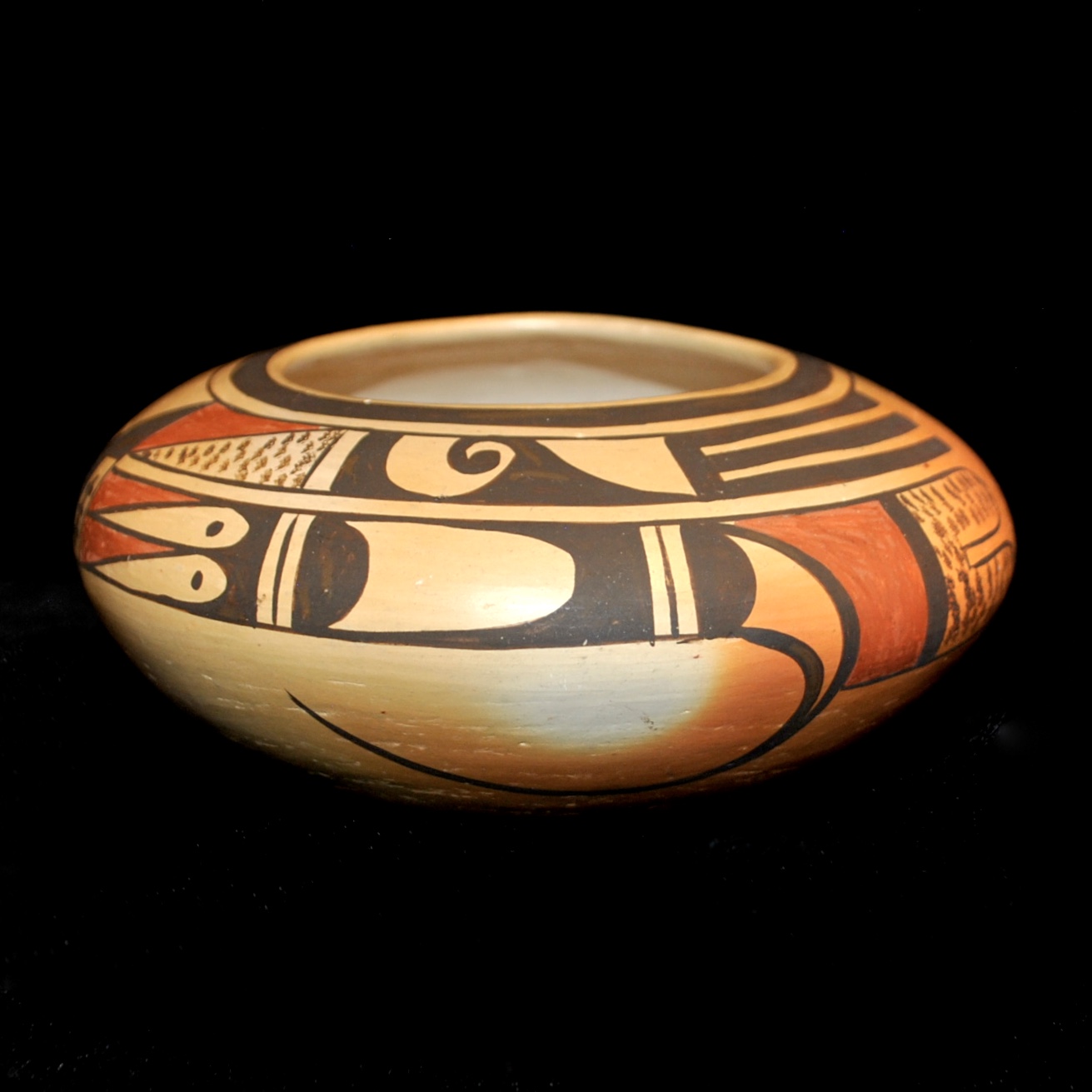
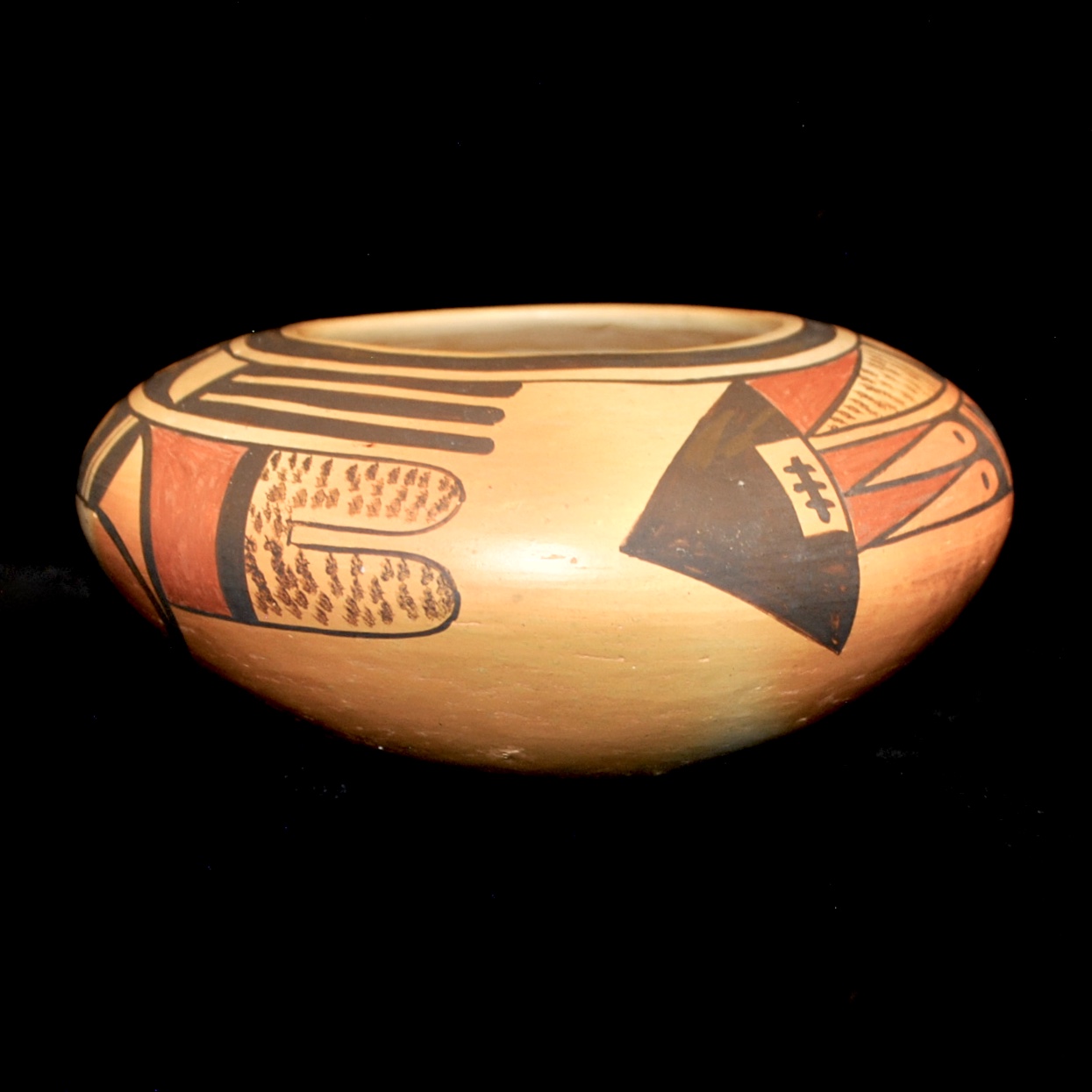
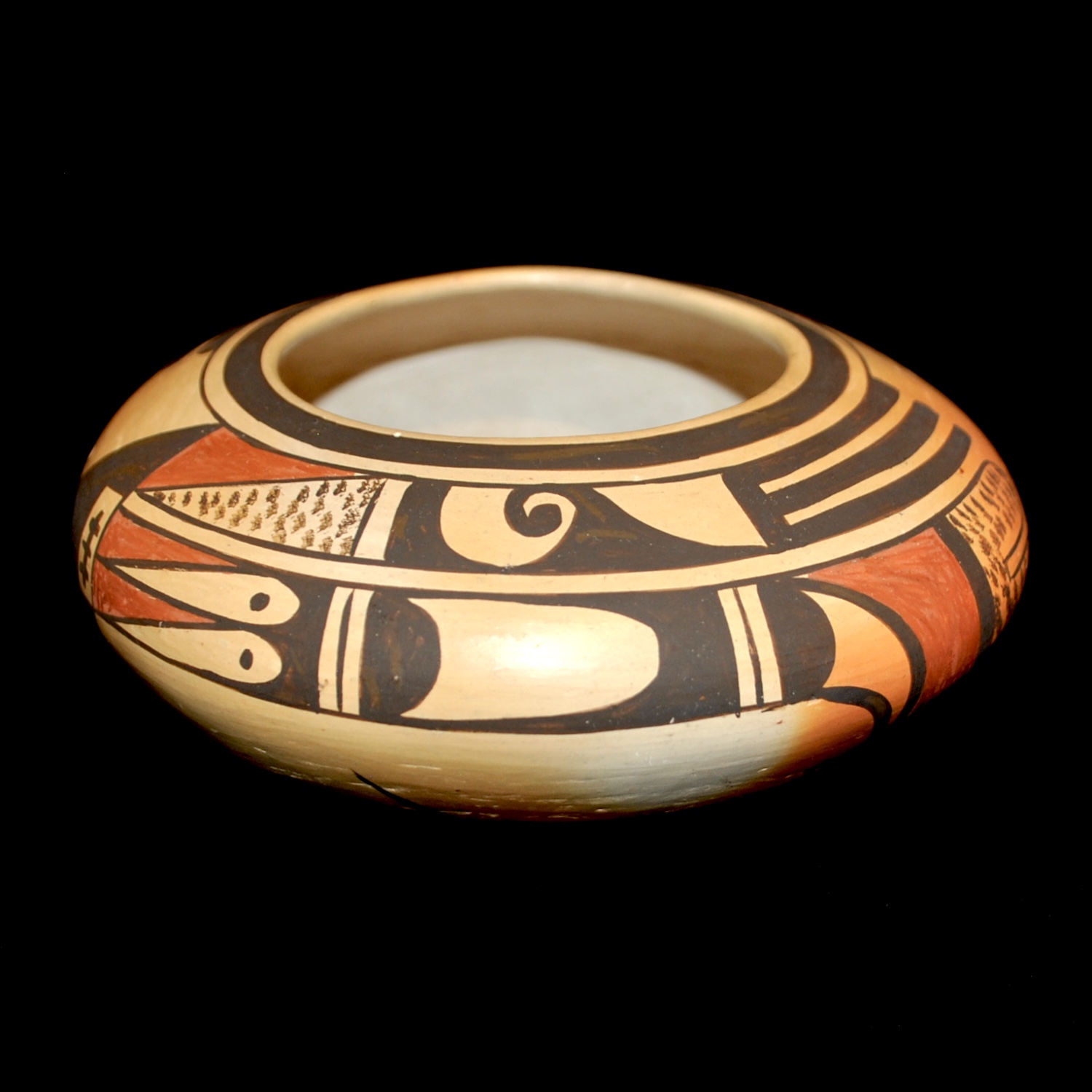
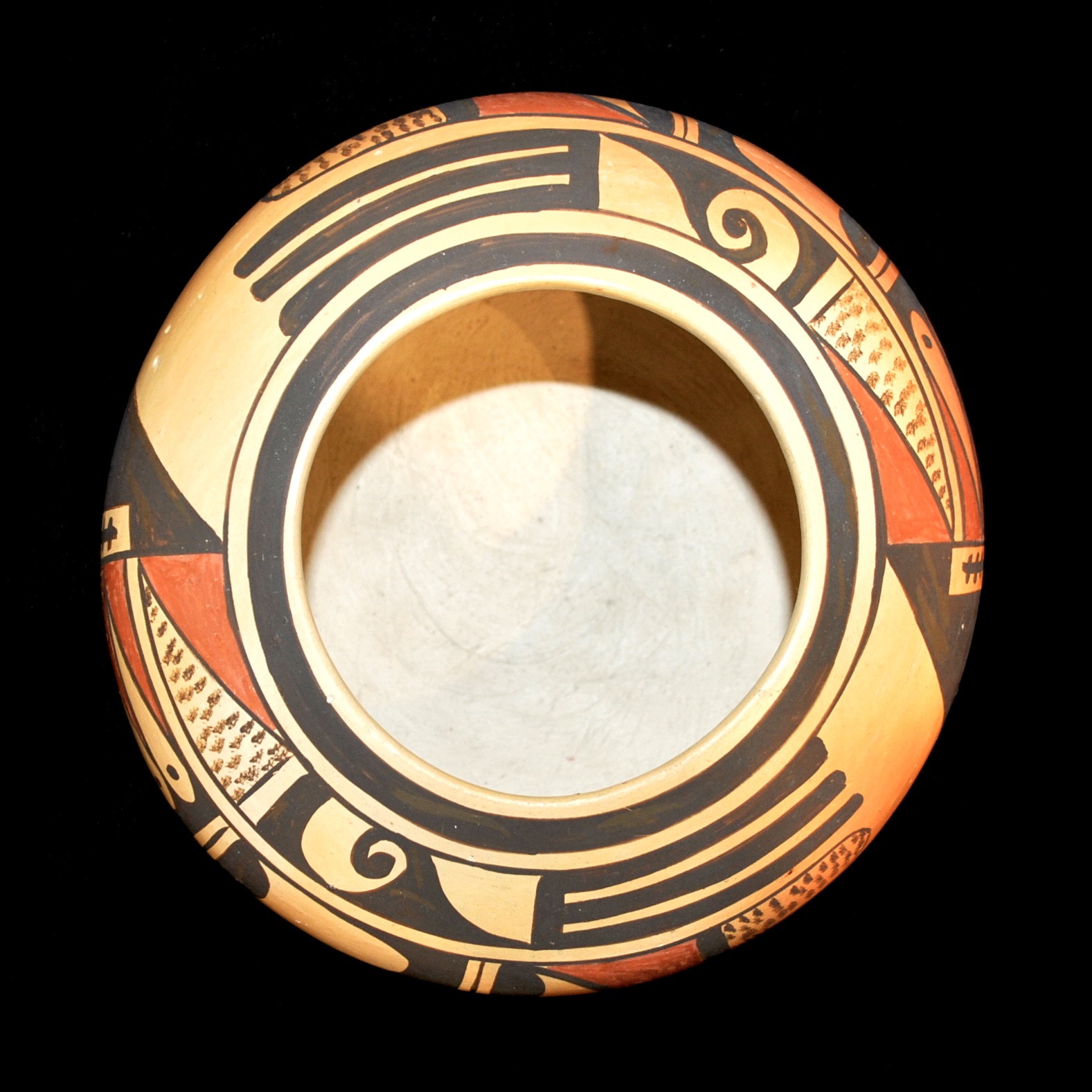
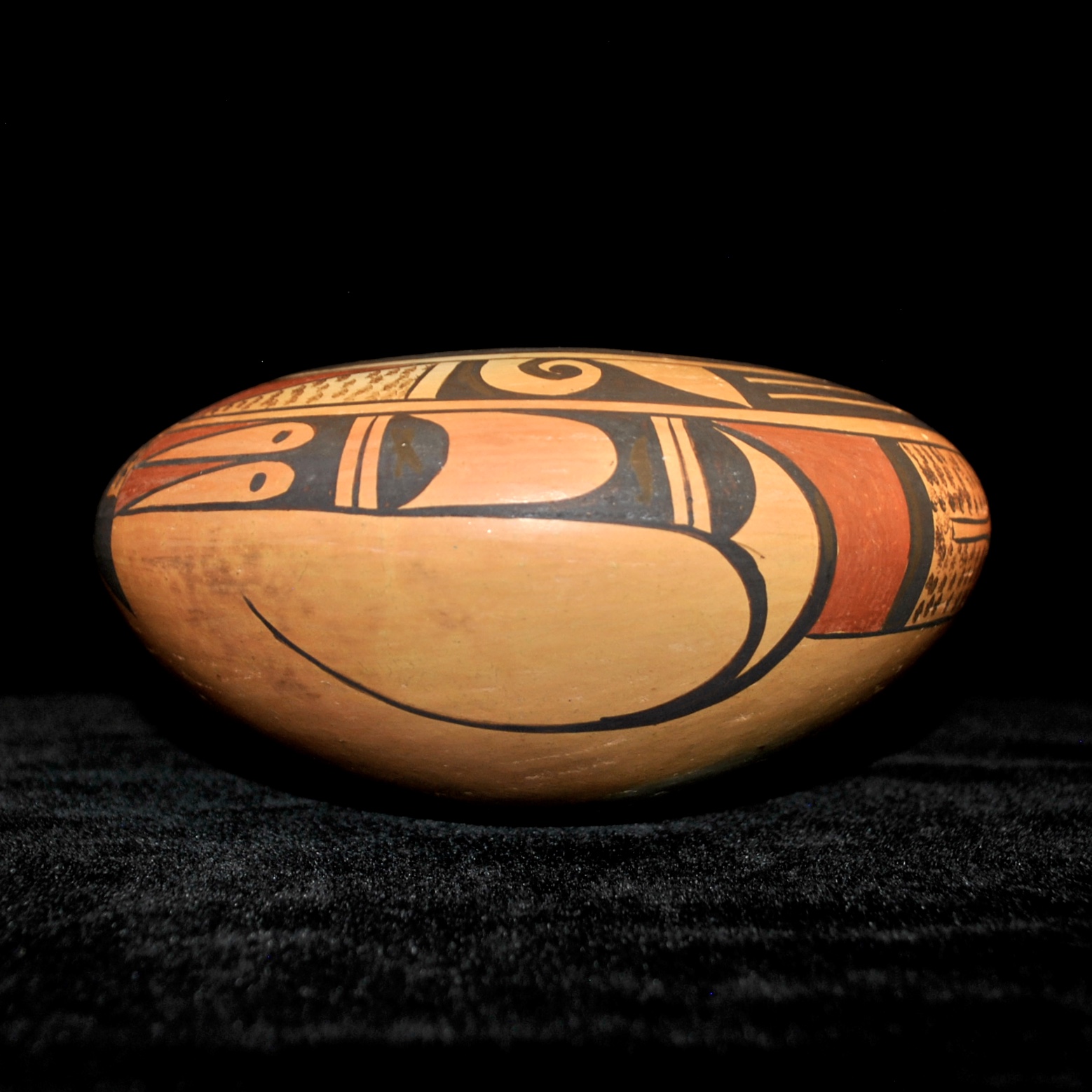
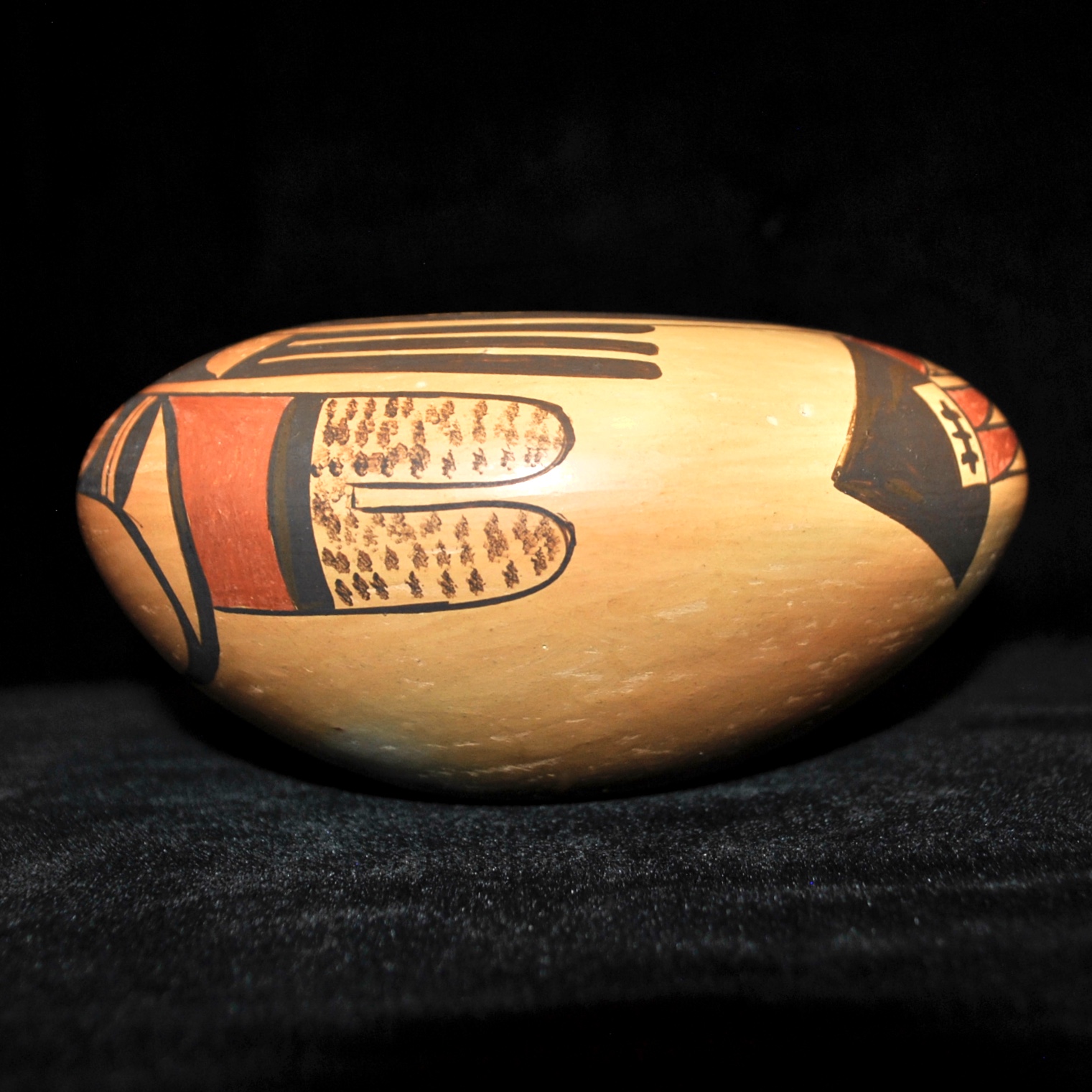
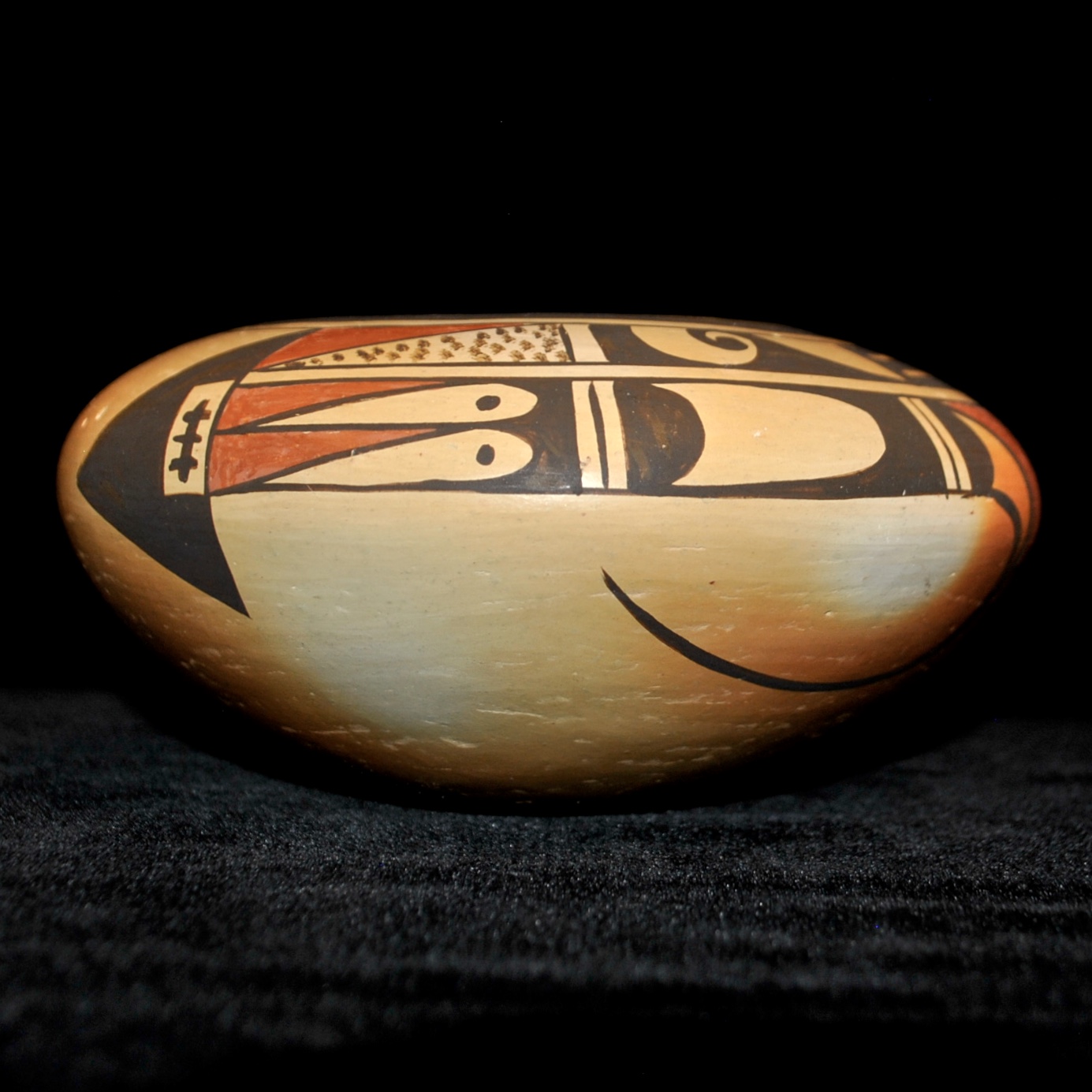
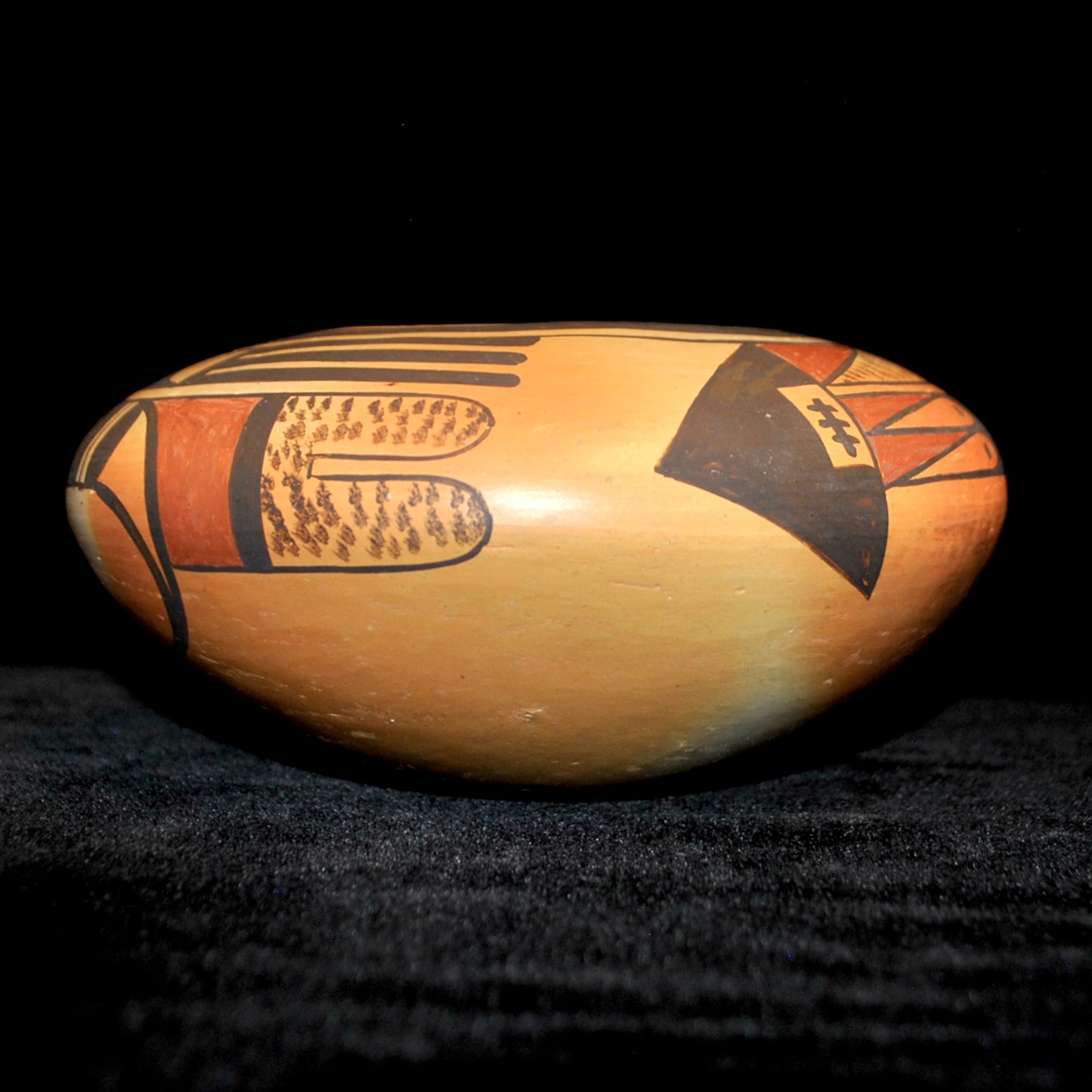
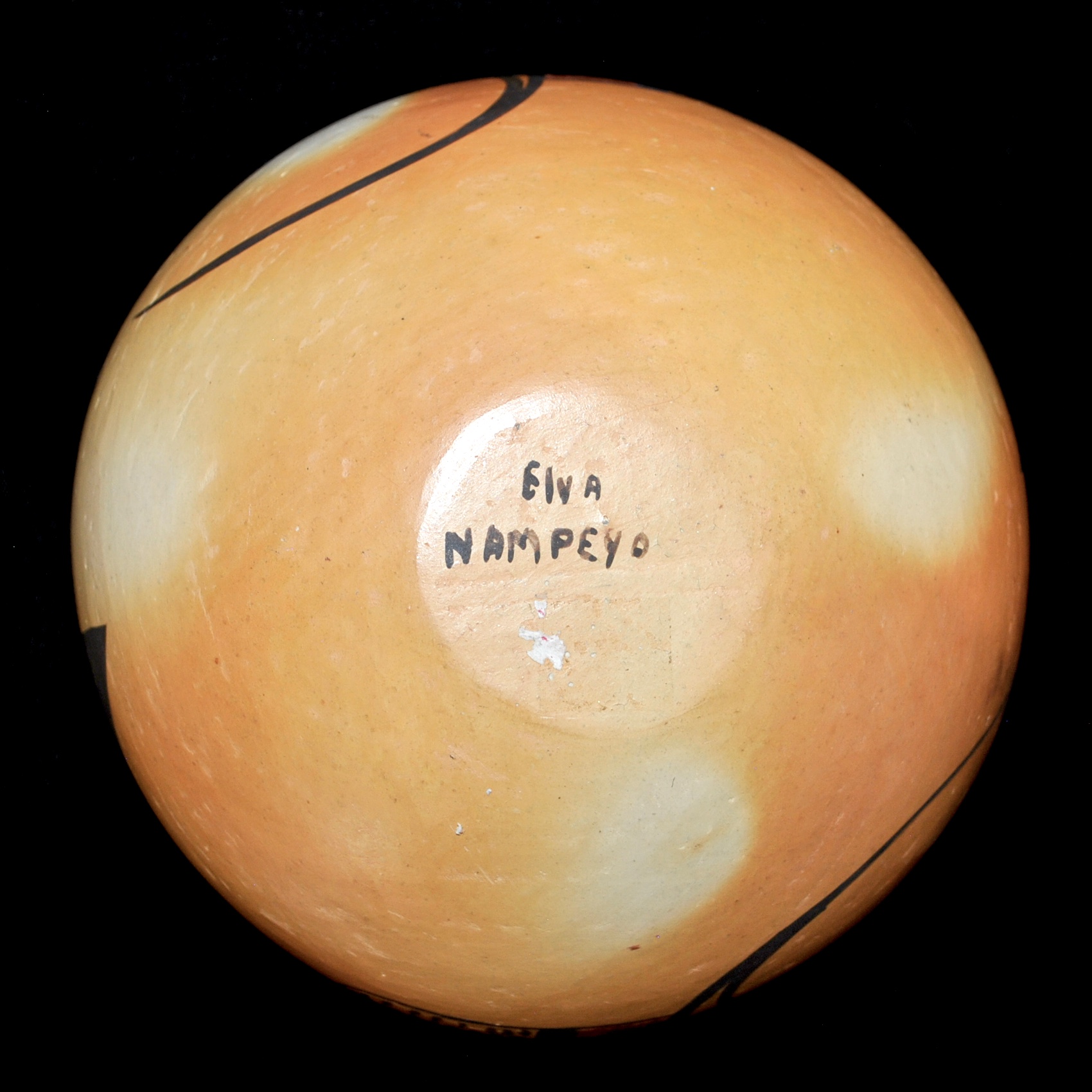
Traditional Hopi Pot by Elva Nampeyo
Traditional hand-coiled, hand-painted Hopi pot by famed potter Elva Nampeyo featuring a sienna and dark brown design on reddish-buff background.
Approx: 3 1/4" x 6 1/2"
Traditional hand-coiled, hand-painted Hopi pot by famed potter Elva Nampeyo featuring a sienna and dark brown design on reddish-buff background.
Approx: 3 1/4" x 6 1/2"
Elva Nampeyo (1926–1985)
Elva Nampeyo (also known as Elva Tewaguna) was born in the Corn Clan house where her grandmother Nampeyo resided, atop Hopi First Mesa, Arizona. She was the daughter of Fannie Nampeyo and Vinton Polacca. As a child Elva would watch her grandmother make pottery and play with the clay. When she was eleven years old her mother began teaching her to make pottery. Elva became an expert at decorating and painting pottery. She specialized in black and red on yellow bowls and jars with traditional migration designs and eagle motifs.
Nampeyo’s pottery often resembled the works of her mother and grandmother. On occasion she could be persuaded to break from tradition and try some designs of her own invention. She signed her pottery as "Elva Nampeyo" followed by the corn clan symbol which was initiated by her mother Fannie. Elva took great pleasure in making pottery and could form as many as eight pots a day.
She signed her pottery as "Elva Nampeyo" followed by the corn clan symbol which was initiated by her mother Fannie. Elva had five children of which four are potters including Neva, Elton, Miriam and Adelle. All sign their work with their first names followed by "Nampeyo" and an ear of corn.


